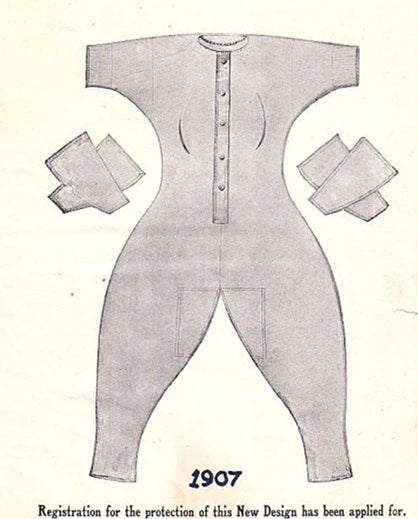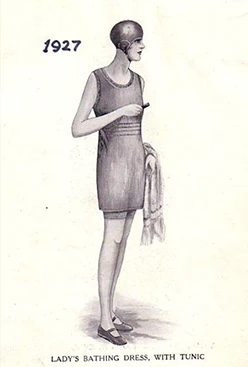

A HISTORY OF HOSIERY
Our heritage spans over two centuries of knitwear production. But rather than our famous cashmere twinsets, it was hosiery that was the company’s speciality when it first launched. We have delved a little deeper into our archives for some more undergarment facts…
In 1815, our founder, Robert Pringle, worked within a partnership called Waldie, Pringle & Wilson in Hawick, Scotland. They bought the Whisky House Mill that year, to set up the framework for knitting and spinning hosiery yarn. How many stocking frames they had is not known, but their products would have been stockings in worsted and lambswool, plain and ribbed, and maybe other ‘non-stocking’ pieces.


At the beginning of the 19th century most gentlemen wore knitted woollen underclothes, either thick or extra-thick. During the 1820s there was a trend away from ‘fancy’ to plainer underwear (a term applied to any article of clothing that was not the final garment that the wearer put on indoors) and production moved from just stockings to undergarments. The first underclothes made in Hawick were known as 20 gauge ‘broad frame slack work’ consisting of long-sleeved shirts, double-breasted shirts and men’s knee drawers. Although stockings were not abandoned, the innovative measures taken by Robert Pringle to introduce new frames gradually allowed the Hawick frameworkers evolve more confidently into the production of underwear.
The 1840s saw the introduction of a new undergarment for men and women: the merino lambswool vest, or under-vest, worn next to the skin. Women called them ‘camisoles’ and they began to feature more details; either dyed or embroidered.

A report commissioned about the Scottish textiles industry in 1865, and when Robert Pringle was now leading ‘Robert Pringle & Son’, commented: ‘the manufacture of hosiery is carried on in Scotland to any important extent only in the town of Hawick, where it is confined chiefly to one class: woollen.’
The button-fronted plackets and woven linens in the Women’s collections were directly inspired by the detail on vintage undergarments featured in the Pringle archives and some of our earliest sketches and pattern templates.


